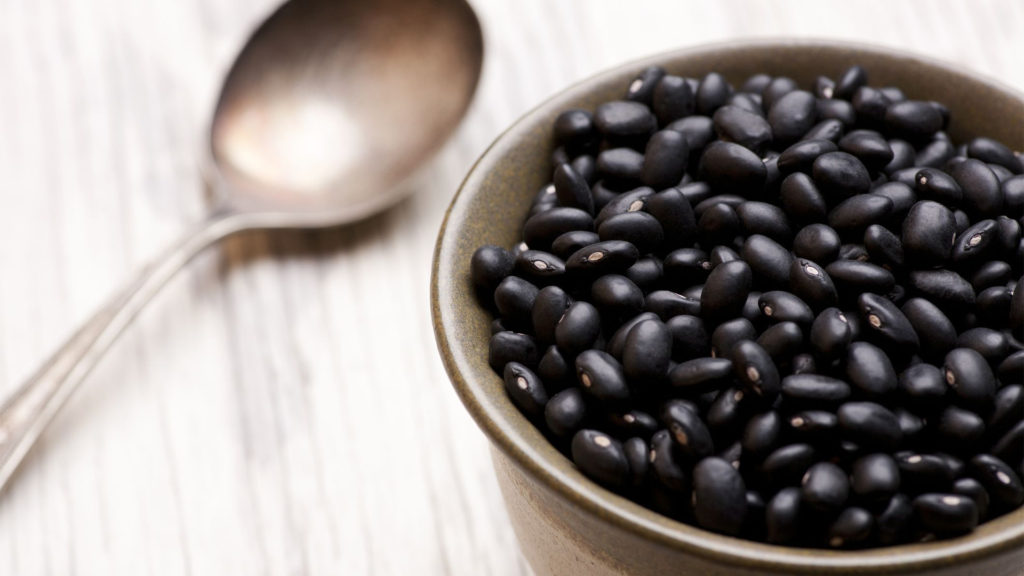“Beans, beans, they’re good for your heart.” So starts the poem many of us learned as children. And as it turns out, beans really are good for your heart. According to nutrition expert Jane Edwards, Ph.D.: “Beans help maintain normal ranges for several risk factors for heart disease: cholesterol, blood pressure, and homocysteine levels.”
So why not eat beans every meal? The next line of the poem suggests why not. The problem of, ahem, flatulence discourages many folks from eating more beans. This is unfortunate, because the nutritional and culinary benefits of beans are enormous. Not only that, but one of the best ways to reduce gas formation is to eat more beans! Eating beans on a regular and frequent basis conditions your digestive system to handle them better and hence reduces their tendency to produce gas.
Dried beans have been grown, stored and consumed by humans for thousands of years. Because of their exceptionally high protein content, beans are a staple food of many different cultures, and hundreds of millions of people depend on them as a primary source of protein.
When beans are combined in the diet with grains, they provide even more protein, because each contains essential amino acids that the other lacks. This notion of “protein complementarity” was first enunciated by Frances Moore Lappe in her groundbreaking book Diet for a Small Planet. Humans have intuitively grasped this concept for centuries, because many traditional cuisines combine beans with grains. Beans and rice and beans with corn tortillas are two well-known examples.
Dried beans come in an astonishing variety of sizes and colors. From the small green mung beans and red adzukis to larger black beans, red kidney beans, brown pintos and white cannellini beans. There are even some heirloom varieties that are speckled.
I usually buy my beans in bulk, both for economy and because you can get a good look at what you are buying. Look for vibrant colored beans, well formed, without too many broken or wrinkled ones. Beans are incredibly cheap when you consider how nutritious they are. Even the best quality organic beans can be purchased in bulk for between 1 and 2 dollars a pound, and a pound of dried beans yields 6 cups of cooked beans!
Proper preparation is essential when making beans, and that means adequate soaking and cooking. Beans are harder to digest if they are not properly soaked and sufficiently cooked. Dried beans should be soaked for 6 to 8 hours before cooking. Make sure you add plenty of water, because the beans will double or triple in size as they absorb the soaking water. Changing the water a few times while the beans are soaking will reduce their gas-producing tendency. When properly soaked, beans will take between 1 and 2 hours to cook, depending on the variety. You know your beans are ready when they can be easily mashed between 2 fingers.
I like almost all beans, but my favorite are black beans. They have a rich, sweet, robust flavor that is delicious in soups. Here is a basic recipe:
Black Bean Soup
2 tablespoons cooking oil
2 medium onions, chopped
1 tablespoon minced garlic
1 tablespoon chili powder, or to taste
3 cups cooked black beans, drained
4 cups stock
Salt and pepper to taste
2 teaspoons freshly squeezed lime juicePlace oil in a large deep saucepan and turn heat to medium. Add onions and cook, stirring, until they are softened. Stir in the chili powder and garlic and cook, stirring, for another minute. Add the beans and the stock and season with salt and pepper. Turn the heat to medium high and bring the soup just about to a boil. Lower heat to medium low and cook, stirring occasionally, for about 10 minutes. Turn off heat. Next, force half the soup through a food mill, or just mash it with a potato masher or large fork. Add the lime juice and stir; taste and adjust seasonings as necessary. Serve garnished with sour cream or yogurt and minced cilantro.
Recipe adapted from How to Cook Everything by Mark Bittman


